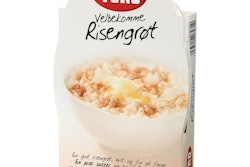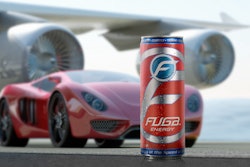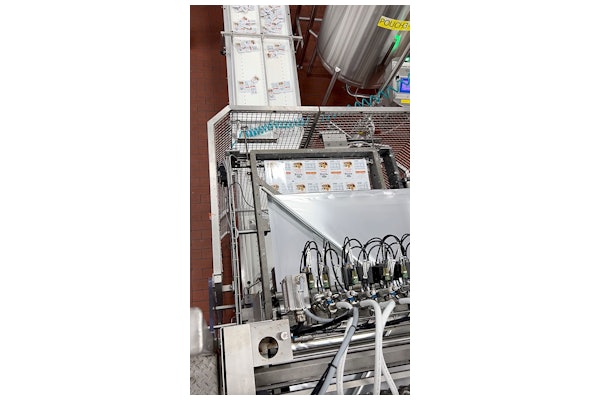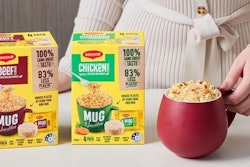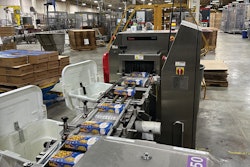
The beer industry recently has introduced temperature-indicating labeling inks, vortex-neck bottles, and punch-top cans. Soon Budweiser will serve us another round of what they are calling packaging innovation with the May 6 launch of a pinched-waist aluminum can for Budweiser beer. Although dubbed the “bowtie” can, the resemblance to that article of clothing is incidental, the intent being to resemble the Budweiser logo.
Budweiser, by not making changes to the beer (i.e. ingredients, taste, color, etc.), is evidencing a belief that innovative packaging is a strategic tool capable of invigorating a brand. That’s reason enough for other CPG companies, wanting to make similar use, to be interested observers. One might as well start with the information that’s been made public through press releases. As expected, they accentuate the positive; nonetheless, they provide material for analysis.
“The world’s most unique and innovative can” is the claim made by Budweiser. Something is unique simply by being one-of-a-kind, which by all accounts, the bowtie can is. But is it truly innovative? In which essential function of packaging does the innovation reside? I don’t see it in the protection function, since there’s no extension of shelf life. Nor do I see it in the utility/convenience function, since no claims are made about the can being easier to open or being a better fit in the fridge. You could argue it’s innovative in the communication function, in that the bowtie can communicates the brand logo not only graphically but structurally.
Suppose in our analysis we concede that the can is indeed innovative. What objective is the innovation supposed to achieve? Innovation that’s not linked to an objective is innovation for innovation’s sake and an exercise in self-indulgence. Whatever the objective, it’s always good when it’s valued by the target consumer. Which consumers is Budweiser targeting? Is the company targeting younger drinkers, for example? No matter, the issue is whether the shape of the can positively influences the purchase decision. An analyst who’s not privy to Budweiser’s thinking can only speculate about how such influence would be exerted. Is there a “cool” factor or social cache associated with being seen holding a bowtie can of Budweiser? Wait a minute—is the can’s bowtie shape even evident when being held?
The preceding discussion underscores the necessity of getting inside the psyche of the target consumer. It’s been said that innovation should not be limited by the consumer’s ability to articulate unmet needs and that companies should not be adverse to “going with their guts” regarding the pursuit of innovation. Be that as it may, that philosophy should not be interpreted as the death knell for competently conducted package design research.
Budweiser disclosed that the development of the bowtie can started in 2010. Considering the final product, was three years impressively short, unduly long, or par for the course? Tough to say. What can be said is that development time is a major component of speed to market; therefore, every company has an incentive to streamline the path from conception to commercialization. The shorter the path, the less time afforded a competitor in which to get wind of what’s in the works, plus the quicker the developer can start reaping the anticipated financial rewards. That last point is not advocating haste at the expense of due diligence; rather, it acknowledges that sales, market share, and profits can be lost due to avoidable extra time spent in development.
The bowtie can contains more aluminum than its cylindrical counterpart, but lightweighting isn’t the only sustainability trend that Budweiser seems to be bucking. Compared to the draw & iron process for manufacturing cylindrical cans, the bowtie can is manufactured with a more complicated 16-step process, consuming more energy. Additionally, the contents of the bowtie can is 11.3 oz., down from the 12 oz. held by a cylindrical can, resulting in a lesser product-to-packaging ratio. It’s not proof that Budweiser doesn’t subscribe to sustainability; after all, aluminum cans are recyclable. It’s more proof that sustainability is a juggling act, the “balls” kept in the air being planet, people, and profits. That’s a reality that would-be packaging innovators should bear in mind.
The aforementioned reduction in content has another dimension: it’s a form of price increase (assuming that Budweiser in bowtie cans will be comparably priced per oz. to Budweiser in cylindrical cans). Never should it be assumed that consumers don’t recognize a de facto price increase; moreover, never should it be assumed that consumers are willing to sacrifice without being offered adequate inducement. Budweiser stands to save .7 oz. of beer per can, multiplied by 8 cans per pack, multiplied by millions (if not billions) of packs, savings that can contribute to the return-on-investment on outlays made not only at the can-making facilities but also at the can-filling facilities. That return-on-investment is less likely if consumers perceive that they are not getting value, in terms of paying more but receiving less. A company should guard against becoming so enamored of an innovation that the company takes for granted that consumers will likewise be smitten. If a romance does blossom, it won’t be due to the innovation’s features but due to how those features translate into benefits for consumers.
Admittedly, only Budweiser’s management knows all that went into the decision to launch the bowtie can. Although it was not the purpose of this article to second-guess the wisdom of Budweiser’s launch, I respect the rights of others who wish to do so. When it comes to the The King of Beers and its critics, only time will tell: Were the critics wise or was Bud wiser?
Sterling Anthony is a consultant, specializing in the strategic use of marketing, logistics, and packaging. His contact information is: 100 Renaissance Center- P.O. Box 43176; Detroit, MI 48243; 313-531-1875 office; 313-531-1972 fax; [email protected]; www.pkgconsultant.com
